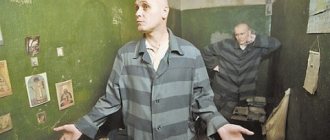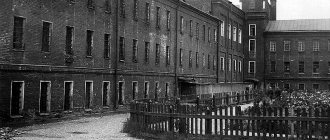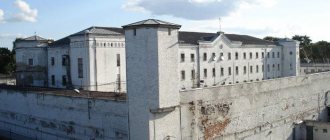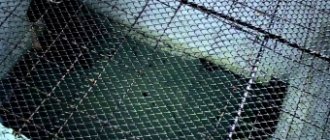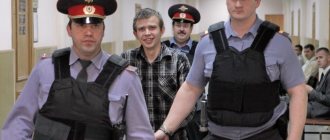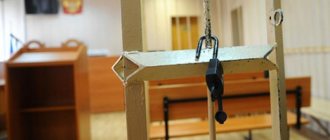In 1996, Russia abolished the death penalty, and now violent criminals remain in prison for the rest of their lives. The regime of detention in such “institutions” is characterized by round-the-clock control over prisoners and the inability to escape. One of these places where even “crazy” thugs are afraid to go is located in Solikamsk. In the special regime correctional colony “White Swan”, out of 2,500 prisoners, 300 murderers, maniacs and cannibals are serving their sentences. The history of this place began back in 1938.
Story
The history of the prison began in 1938 – at the height of Stalin’s repressions. Initially, political prisoners were sent here, especially many priests. In the 1950s, some prisoners were rehabilitated, while others were transferred to other colonies. And a colony for criminals was opened in the building. Hundreds of thieves in law were “re-educated” here.
Since 1999, the prison began to specialize in life-sentence prisoners. The secure building was originally built so that no one could escape. Criminals with at least three victims were placed here. Currently, leaders of gangster groups, rapists and murderers, and maniacs are serving their sentences here.
Thieves in law in the White Swan colony
Thieves in law who died in prisons and colonies
"White Swan" was created in 1938 as a camp for political criminals. In 1955, the colony was repurposed as a place for the re-education of thieves in law. The name of Vasily Snytserev, a major general who broke authority, is connected with this time period. During the years of his service, five thousand criminals passed through the White Swan: many of them lost their status in the criminal hierarchy, and 130 thieves in law renounced their crown.
They “processed” criminals who considered themselves special using different methods: they were forced to work, and for disobedience they were sent to a detention center; they found a serious illness among the prisoners and entered into an agreement: treatment - after refusing the “corona”; thieves in law were put in so-called “press huts”, where they were dealt with by prisoners supporting the prison administration.
The most famous local thief in law who has not renounced his title is Vasya Brilliant, who ended up in the White Swan after 30 years in prisons and camps. Here, in 1985, shortly after his arrival, he died, according to a medical report, of a heart attack. The grave of the thief in law with a monument in the form of a dome is located in Solikamsk.
“In his (Brilliant’s) times, as it was: the prisoner did not dare to lay a finger on a doctor or teacher, he did not dare to say a bad word to them - this is sacred. And then came the troubled 90s, there was blood and victims everywhere,” said a White Swan employee. — Now is a new stage of the relationship. But the prisoner became completely different, “homey.” Instead of cigarettes - light cigarettes, instead of chifir - tea with bergamot. The inmates take care of themselves, always assert their rights, and demand attentive treatment.”
Diagram of a cell in the White Swan colony. Photo: Alexey Zhuravlev, www.perm.kp.ru
Name
Why does the prison have such a romantic name? There are several answers to this question.
- The first option is because of the white walls of the building and the fence.
- The second is because of the sculptures installed in the courtyard. For example, the figure of a swan is placed above the entrance to the building that houses the office of the head of the prison. Also, the urns on the prison grounds are made in the shape of these birds.
- The third is due to the posture in which prisoners move around the zone. Hands behind your back and a forward tilt of 90 degrees make the silhouette of a person look like a swimming swan.
Conditions of detention
The regime in the “White Swan” is rightly considered one of the strictest. The inmates are under constant and close supervision of the guards. If the inspection valve is raised, the prisoner must immediately stand up, face the wall, and place his hands on the wall, palms facing out. Legs should be wide apart. Until the valve closes, the person should be in this position.
On average, there are three prisoners in each cell. Criminals are settled in accordance with their psychological characteristics and character. To do this, a psychologist first works with them. Showering is allowed once a week, walking is allowed every day for an hour. Walking cameras are located on the roof of the building.
On the territory of the prison there is a production workshop for the manufacture of mahogany products. More than seven hundred craftsmen work there. There is also a garden where vegetables are grown, and meat is also prepared.
There is also a cultural program. The neighboring women's colony periodically comes to the colony for concerts. There is an Orthodox Church on site, and many prisoners express a desire to be baptized. There is a library that can be used twice a week.
The first ten years in prison are especially difficult. Residents are not allowed to study or work. But subsequently, the prisoners are transferred to a lighter regime - they are allowed to correspond with their relatives, receive packages from them, and even occasionally see them on dates.
When a criminal dies, a notification is sent to his relatives. Within three days, they must either pick up the body or send a response letter confirming their desire for independent burial. If there are no relatives or they do not want to come and take care of the deceased, then he is buried in a local cemetery. Not everyone is able to withstand such a harsh regime and the realization that they will never be released - therefore, cases of suicide and death under circumstances that are not fully understood are not uncommon.
Currently, there are about three hundred prisoners in the White Swan.
"White Swan", black mode
The harsh history of Moscow's most famous prison
The city of Solikamsk in the Perm region is famous throughout the country for two things - mines and the White Swan. The lyrical name hides a colony (IK-2) with the strictest regime for those sentenced to life - serial killers, maniacs, terrorists. Why "White Swan"? Three versions. The first is because of the figures of birds scattered around the territory as a weather vane, patterns on the fence, and sculptures. The second explanation is associated with thieves in law: supposedly criminal generals called their stay here their swan song. According to the third version, "White Swan" refers to the position in which the prisoners moved: the body was bent, the hands were handcuffed and raised behind the back.
Although they say they no longer drive prisoners this way, the rules are still as strict as possible. When the viewing window in the cell is opened, the convicts jump up facing the wall, arms raised, palms turned outward - and do not move. Walk - 1.5 hours, visit with relatives - 4 hours twice a year, after 10 years of approximately behavior in the colony, long meetings are possible.
In total, there are about 100 cameras in the “White Swan”, near each there are terrifying signs: “Killed a family of four with extreme cruelty” or “Rape and murder of minors.” In addition to the “wall dossiers,” there are cameras everywhere. “The security has surveillance cameras for living and inanimate objects along the entire perimeter of the colony; in the center of the institution there are several hidden mini-cameras that constantly record what is happening,” according to the colony’s website. It is impossible to escape, there is only one way out - to the cemetery. Although the history of the prison knows four cases of replacing a life sentence with a fixed term, the last review of a case with such an outcome dates back to 2011.
Colony "White Swan". Photo: Alexey Zhuravlev, www.perm.kp.ru
Escapes
It is believed that it is simply impossible to escape from here. High fences, barbed wire, 24-hour surveillance, trained dogs, security cameras - all this is designed to prevent even the slightest attempt to escape.
However, there was such an attempt in the history of the White Swan. In 1992, a convict named Shafranov got hold of a grenade and came with it to the prison warden’s office. Threatening, he demanded the release of his comrade from the cell and the provision of both of them with the necessary transport to leave Russia. During the special operation, Shafranov was killed, and one special forces officer also died. But this tragic event is an exception, and security measures have been increased since then.
Cases of escape and increased security
Even at the construction stage, a special project was developed that completely excluded the possibility of escape. In 2022, it is impossible to escape from the colony. Prisoners are under 24-hour video surveillance, and carefully selected staff do their best to ensure that criminals adhere to a strict routine. Control is carried out by about 600 guards and 50 service dogs, and special signs hang on the cells, indicating the article and a brief description of the crime committed. This serves as a clear reminder to employees that they are not dealing with ordinary rowdies and thieves, but with Russia's most brutal murderers.
Photo: Alexey Zhuravlev
Only professionals can work with criminals. The head of the department of socio-psychological work at the White Swan said that the selection process is similar to that of cosmonauts. Stress resistance, intuition and good health are important.
During the entire existence of the colony there was not a single case of escape, but attempts were made to do so. The loudest occurred in 1992. Convict Shafranov burst into the chief's office with a grenade and demanded that he and his cellmate be provided with transport so that they could leave the territory. Shafranov was killed. After the incident, security was strengthened.
Salman Raduev
The Chechen terrorist Salman Raduev, who was related to Dzhokhar Dudayev himself (was married to the daughter of his second cousin), was also held here.
Raduev was arrested in March 2000. The trial lasted more than a year, and in the end the terrorist was sentenced to life imprisonment in the White Swan. In August 2002, he was taken to the place of serving his sentence, but a few months later he ended up in the prison hospital with a diagnosis of numerous hemorrhages in the internal organs. Doctors determined that the prisoner suffered from a rare type of blood incoagulability. Raduev died on December 14, 2002 and was buried at the Borovskoye cemetery in Solikamsk. According to doctors, the cause of sudden bleeding could be post-traumatic phenomena and the consequences of bullet wounds. The presence of blood incoagulability and frequent bleeding in the patient was confirmed by the Chechen doctor who treated him earlier, Khasan Baiev. However, many are still convinced: the death of Salman Raduev is a consequence of injuries received in prison.
Raduev in prison
"White Swan": the most brutal criminals
- The former prisoner of the “White Swan” - legendary in his cruelty - is the Chechen terrorist Salman Raduev, accused of terrorism, kidnapping, hostage-taking, murders with extreme cruelty, and banditry. He died in prison in December 2002 after internal hemorrhage. He was buried without a name plaque.
- Serial killer Roman Burtsev is serving his sentence in a colony. “Kamensky Chikatilo” raped and killed six children in the late 90s. At the trial, he explained the atrocities committed by the thirst to “taste innocence.” Sentenced to death, commuted to life imprisonment.
- In the fall of 1991, Sergei Martynov abused and killed a minor girl, for which he received 15 years in prison. Having been released, the criminal returned to atrocities: traveling through the cities of Russia, he took the lives of children, women, men and the elderly, constantly changing the method of execution. Since 2012 he has been in the White Swan colony.
The list goes on for a long time - terrorist Yusuf Krymshamkhalov, pedophile Vladimir Khudyakov, killer of pensioners Denis Pischikov - in total, about 300 dangerous and merciless criminals live in the colony.
Based on materials from mk.ru, www.59.fsin.su, www.perm.kp.ru,
Alisa Osina
thief in law maniacs life sentence in prison
Yuri Shutov
Yuri Shutov, a politician, writer, who was for some time an assistant to Anatoly Sobchak, was also sitting in the White Swan. In 1999, he was brought to trial on suspicion of organizing contract killings (of the Vice-Governor of St. Petersburg Mikhail Manevich and State Duma deputy Galina Starovoitova). As a result, the investigation lasted two and a half years, and then the case was considered in court for another four and a half. In 2006, Shutov was sentenced to life imprisonment, despite public protests that the sentence was unfounded and politicized. The accused himself did not admit his guilt.
Yuri Shutov in court
Shutov was kept in the White Swan prison, where he died in December 2014. He was buried at the Serafimovskoye cemetery in St. Petersburg.
Yuri Shutov
What was the reason for such a harsh sentence? Contemporaries and comrades of Yuri Shutov, who communicated with him for many years, believe that, most likely, the matter is in his careless statements.
Mikhail Ustinovich
Mikhail Ustinovich is a truly legendary inhabitant of the “White Swan”, who is still there. This is a famous Moscow raider who operated in the 1990s. His gang has more than 20 robberies, many robberies and four murders.
The criminal was found thanks to a hat lost during the robbery. During this raid on the merchant, two guards were killed. The smell of the hat was preserved, and subsequently, when Ustinovich was arrested while trying to hand over the stolen valuables to a pawnshop, he was identified. In 1996, the bandit was sentenced to death, commuted to life imprisonment.
Mikhail Ustinovich
In the 2000s, journalists came to him and asked if he would like to live forever. Ustinovich stated that life imprisonment was worse than any death, and that he would prefer to be executed.
In 1998, the head of the Saransk organized crime group, Andrei Volkhov, was imprisoned in the White Swan. Just like Ustinovich, he was first sentenced to death, which was later commuted to life imprisonment. Volkhov's group was engaged in robbery, robbery, and extortion. She has a lot of brutal murders to her name. In particular, in 1995, Volkhov personally shot and killed his rival, Garik Keshabyan, then his body was dismembered, and the parts were buried in different areas of Moscow.
In 2008, at a meeting with journalists, Andrei Volkhov admitted that he sincerely repented of his actions and asked for forgiveness from the relatives of his victims.
Murderers in a cage. Report from the legendary "White Swan"
In IK-2 there are those convicted of especially serious crimes: murderers, rapists, members of gangsters, leaders of organized criminal groups. If you take the number of all the people they killed and divide it equally, you get six people for each. A special correspondent for the Local Time newspaper visited a colony for life-sentenced prisoners.
In total, there are five colonies in Russia for life prisoners: “Black Dolphin” - the largest existing colony with 1,600 prisoners is located in Sol-Iletsk, Orenburg region; “Vologda Pyatak” with 505 seats, located in the former Kirillo-Novoezersky Monastery on Ognenny Island, Vologda Region; "Black Golden Eagle" for 499 people in the village. Lozvinsky, Sverdlovsk region; "Polar Owl" for 400 people in the village. Kharp of the Yamalo-Nenets Autonomous Okrug; and our "White Swan".
They died here for three days
“White Swan” is not just a colony for those sentenced to life, it is a whole correctional complex - OIK-2 (union of correctional colonies), which includes: strict regime IK-1, TPP (transit and transit point), two settlement colonies ( KP-3 and KP-8) and IK-2 for life sentences. In total, “White Swan” can accommodate 962 prisoners of various categories; for “lifers” there are 300 places, and today they are without three people at full strength, as they say here, at the occupancy limit.
The history of the “White Swan” originates from the Solikamsk Holy Trinity Monastery of the 17th century. In 1938, the Soviet authorities turned it into a prison. To this day, several scrawled inscriptions are visible on the ground floor, where there were two very cramped punishment cells. One reads: “They died here for three days. But still they didn’t die. Be strong, comrades." It was here that the writer Varlam Shalamov and the Monk Kuksha of Odessa sat. In 1986, the isolation ward was closed, but only in 1995 the monastery began operating as a religious community. During reconstruction and laying communications, human bones were found.
“White Swan”, then still the Usolsky forced labor camp, was formed in the spring of 1960 in accordance with the order of the Usolsky ITL of the Ministry of Internal Affairs of the RSFSR on the basis of the Usollag of the NKVD of the USSR, which existed since 1938. Then political prisoners began to arrive in Solikamsk. And of course, some prisoners of the Solikamsk Monastery were also transported to the White Swan.
Three in a boat
The name “White Swan”, according to one legend, is associated with “thieves in law” and was invented by them - this was their last “swan” song. A less romantic version is associated with the way life-sentenced prisoners move around the territory of the penal colony: leaning forward strongly with their arms thrown behind their backs. Today, the entire territory of the colony is literally strewn with images of swans: this is a weather vane, structures in the yard, and patterns on wooden doors and even on metal grilles.
Living chamber
The first life sentences were brought to Solikamsk only in 1999. There were 24 of them. The White Swan had existed for 60 years by that time. Today, the number of “lifers” in IK-2 has increased more than tenfold. And this figure will continue to grow for another ten years, until the time comes for a number of convicts to ask the court for parole. It turns out that this opportunity appears to a criminal who has served 25 years.
Boxing with two cells, each with three life prisoners. The model was made by prisoners from bread. Kept in a local museum.
The conditions of detention for these criminals correspond to international standards - three people in a cell. And these three people plus a couple of colony employees are all whom the life sentenced person can see for the rest of his days. Criminals in this category are too dangerous and cannot cross paths with others. Therefore, in the past, prisoners often took blame for crimes they did not commit: a trip to court was their only opportunity to “see the world.” Now there are fewer such confessions: trials are held remotely, via video conferencing.
Anna Bukatova interviews a prisoner.
Read the full text of Anna Bukatova’s report in the Local Time newspaper. To be continued.
